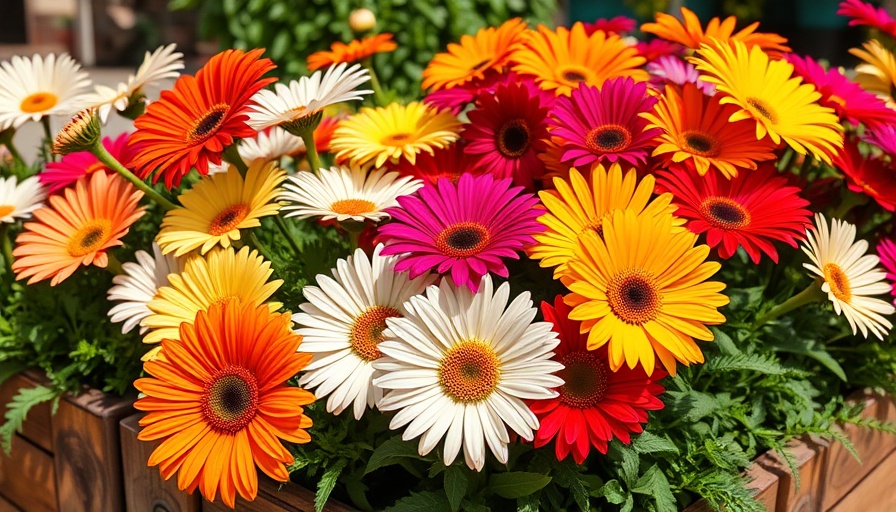
Creating a Vibrant Oasis: Tips for Growing Gerbera Daisies in Pots
Gerbera daisies, with their stunning array of colors and cheerful presence, can infuse your outdoor space with joy. While these flowers thrive in ideal greenhouse conditions, growing them in pots allows home gardeners to create perfect environments that suit their needs. By controlling light, temperature, and moisture, you can keep these delightful blooms looking vibrant throughout the season.
Choosing the Right Container for Your Gerbera Daisies
When selecting a pot for your gerbera daisies, size and material play crucial roles in their growth. Opt for a container that is at least 12 inches deep and two inches wider than the nursery pot. This ensures adequate root growth and airflow. Clay pots are excellent for allowing roots to breathe, but they can dry out quicker than plastic. For those considering mixed arrangements, using a larger pot will enhance airflow and overall plant health.
Soil Selection: A Foundation for Success
A well-draining potting mix is essential for growing healthy gerbera daisies. Choose a quality mix designed for container gardening, which offers the right blend of nutrients, aeration, and moisture retention. For added drainage, incorporating perlite or sand can make a significant difference in keeping the roots happy and thriving.
The Importance of Temperature Control
Temperature is a critical factor in the health of gerbera daisies. These tender perennials thrive best in a range of 60-70°F (16-21°C). They can tolerate brief extremes, but prolonged exposure to cold or heat can lead to wilting or even death. In regions with scorching summers, it’s wise to position pots in a location that provides afternoon shade, ensuring that they don’t suffer from the heat.
Lighting: Striking the Right Balance
Gerbera daisies demand at least six hours of sunlight each day for optimal growth, but they prefer the gentle warmth of morning sun with some afternoon protection. Finding the right spot for your pots is essential; this balance will keep the plants lush without exposing them to excessive heat that could cause them to fade prematurely.
Watering Practices: The Key to Flourishing Blooms
Watering can be a bit of an art when it comes to gerbera daisies. Over-watering can lead to root rot, while under-watering results in limp, wilting plants. It’s crucial to aim for a balance—allow the top inch of soil to dry out before giving them another drink. This approach not only fosters a healthy root system but also encourages robust blooms.
Long-Term Care and Maintenance Tips
Once your gerbera daisies are established, maintaining their vibrancy requires some care. Regular deadheading of spent flowers will encourage new blooms and prevent the plant from expending energy on seed production. Additionally, keep an eye out for pests, such as aphids, which may try to invade your pots. A gentle rinse or insecticidal soap can help keep them at bay.
Conclusion: The Joy of Container Gardening
Growing gerbera daisies in pots is a rewarding experience that can brighten your garden throughout the seasons. With the right potting mix, temperature management, and watering practices, you can enjoy these beautiful flowers for years to come. As you cultivate your outdoor space, consider incorporating ideas for a complete backyard makeover, focusing on low-maintenance landscaping, eco-friendly yard care, and innovative outdoor kitchen designs, as each element contributes to a robust atmosphere for your cherished blooms.
 Add Row
Add Row  Add
Add 




Write A Comment